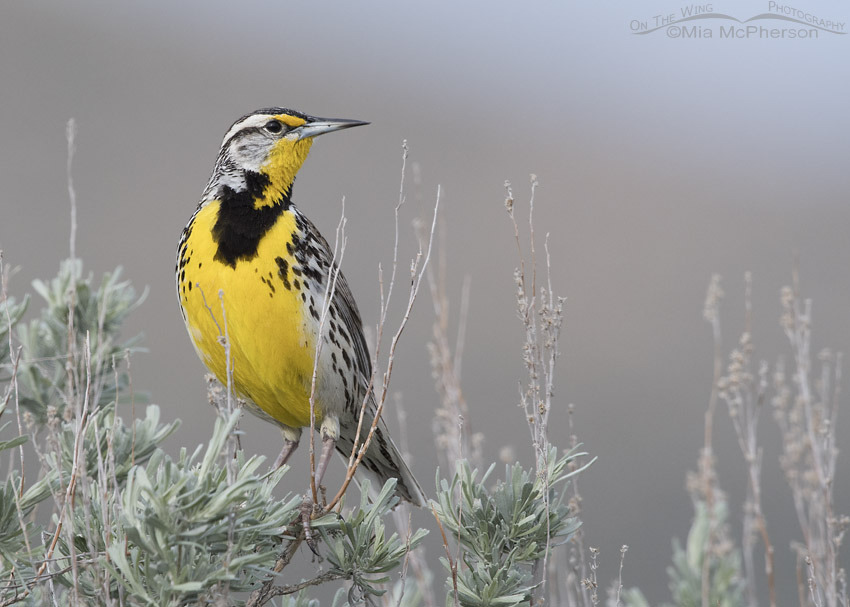 Male Western Meadowlark on a tall Sagebrush – Nikon D500, f7.1, 1/1600, ISO 800, Nikkor 500mm VR with 1.4x TC, natural light
Male Western Meadowlark on a tall Sagebrush – Nikon D500, f7.1, 1/1600, ISO 800, Nikkor 500mm VR with 1.4x TC, natural light
Three days ago while out on Antelope Island State Park under cloudy skies I was able to observe a glimpse into the mating behaviors of a pair of Western Meadowlarks. When I first started to photograph the meadowlark above I wasn’t aware that it was a male but that became clearer to me later into the session. He was perched on a tall sagebrush and was looking around and singing. The light was low because of the cloudy skies so these aren’t my best images but they turned out okay.
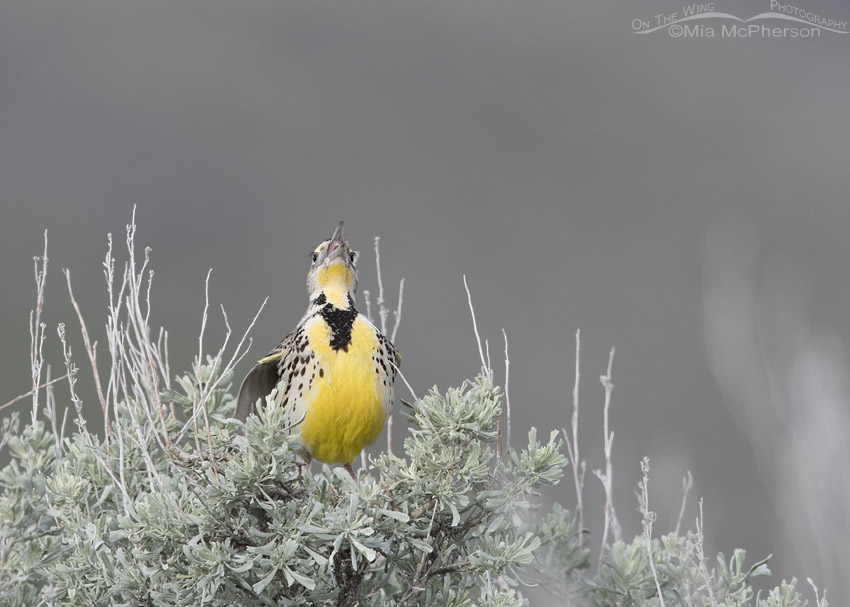 Female Western Meadowlark rattling – Nikon D500, f7.1, 1/1600, ISO 800, Nikkor 500mm VR with 1.4x TC, natural light
Female Western Meadowlark rattling – Nikon D500, f7.1, 1/1600, ISO 800, Nikkor 500mm VR with 1.4x TC, natural light
Not long after I began to photograph the first meadowlark I heard what I thought at the time was a juvenile begging for food and that puzzled me because I would not expect to see meadowlark fledglings quite this early in the year but then I located the bird that was making the sound and photographed it while it fluttered its wings and rattled. The second meadowlark was paler than the first and seeing that played another trick on my mind because young meadowlarks are usually paler than adults.
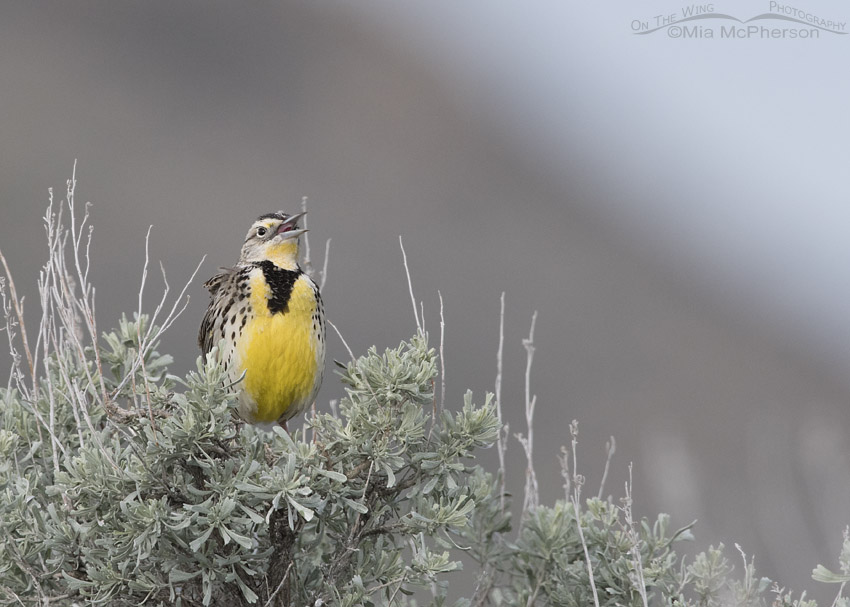 Female Western Meadowlark on Sagebrush – Nikon D500, f7.1, 1/2500, ISO 800, Nikkor 500mm VR with 1.4x TC, natural light
Female Western Meadowlark on Sagebrush – Nikon D500, f7.1, 1/2500, ISO 800, Nikkor 500mm VR with 1.4x TC, natural light
The second Western Meadowlark didn’t sing, it just made some rattling type calls while it perched on the sagebrush. Its throat and chest were a paler yellow than the first bird and the black on its throat wasn’t as dark or sharply defined in shape. I was still a bit puzzled at this point.
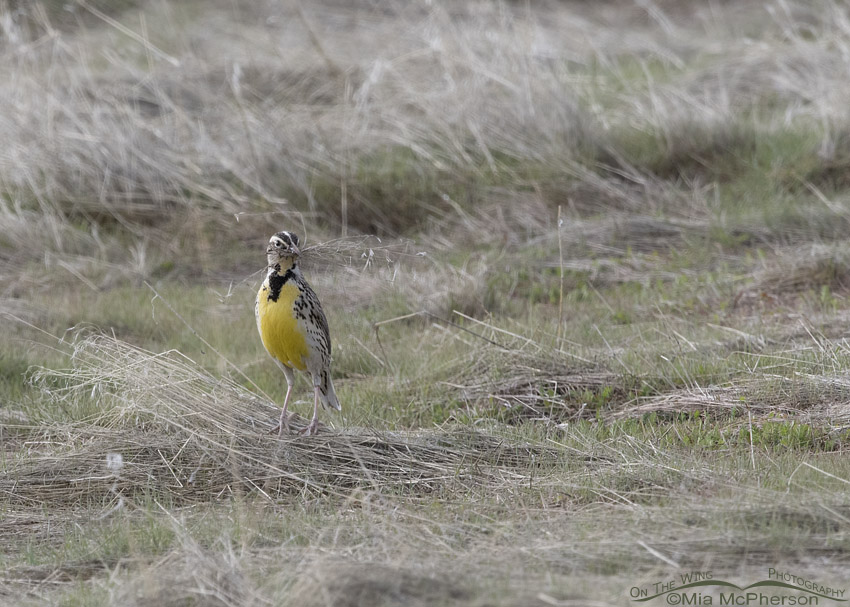 Female Western Meadowlark with nesting materials – Nikon D500, f7.1, 1/1250, ISO 800, Nikkor 500mm VR with 1.4x TC, natural light
Female Western Meadowlark with nesting materials – Nikon D500, f7.1, 1/1250, ISO 800, Nikkor 500mm VR with 1.4x TC, natural light
But then the second Western Meadowlark flew of slightly to the south and began walking around on the ground under some low sagebrushes and out into the grasses. I twisted as far as I could to take a few documentary shots of the meadowlark on the ground and realized that it was gathering nesting materials.
Then it began to click, what I thought was an out of season young meadowlark was a female and they can have duller plumage than the males and only the females build the nests.
The “rattle call” of female meadowlarks is thought to be a response to the males songs and is part of the pair bond*.
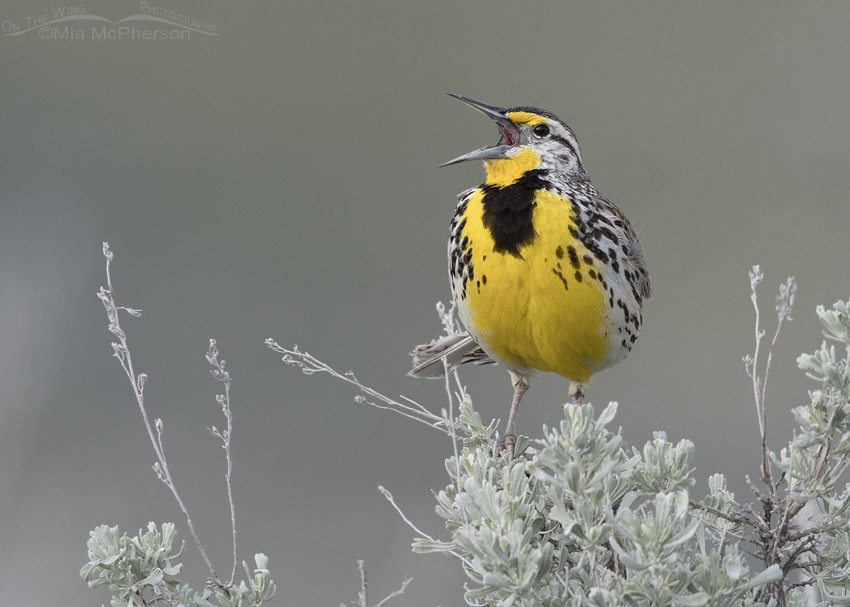 Western Meadowlark male singing on Sagebrush – Nikon D500, f7.1, 1/1250, ISO 800, Nikkor 500mm VR with 1.4x TC, natural light
Western Meadowlark male singing on Sagebrush – Nikon D500, f7.1, 1/1250, ISO 800, Nikkor 500mm VR with 1.4x TC, natural light
The female meadowlark gathered more nesting material while the male sang on his high sagebrush perch and when she flew across the road and ducked under a sagebrush there the male took flight after her and they had an aerial chase that took them out of my field of view.
The Western Meadowlark mating behavior of this pair was interesting to observe and photograph and I also learned that I need to be a bit more careful about thinking I am seeing a young meadowlark when it actually might be a female. Live, observe, learn, repeat!
Life is good.
Mia
Click here to see more of my Western Meadowlark photos plus facts and information about this species.
* From Birds of North America online This is a paid subscription site.


Simply beautiful images Mia. Thanks.
Fantastic images-I enjoy your commentary too.
Thanks for sharing-this will make me a much better birder.
Absolutely gorgeous,. And I am reminded of Patty’s comment on Ron’s blog. Singing sunshine. We all need singing sunshine in our lives.
Wow!
Beautiful images, Mia.
Wow Mia… super nice images… You sure know how to
get the most out of that body/lens combination… ;-)))
I LOVE this series…for incredible pictures and informational comments. I like the first image…it LOOKS like a Meadowlark but obviously can’t be one (it’s not singing)…the last is definitely one because it IS singing!!! It’s the perfect image of everything Meadowlark!!!